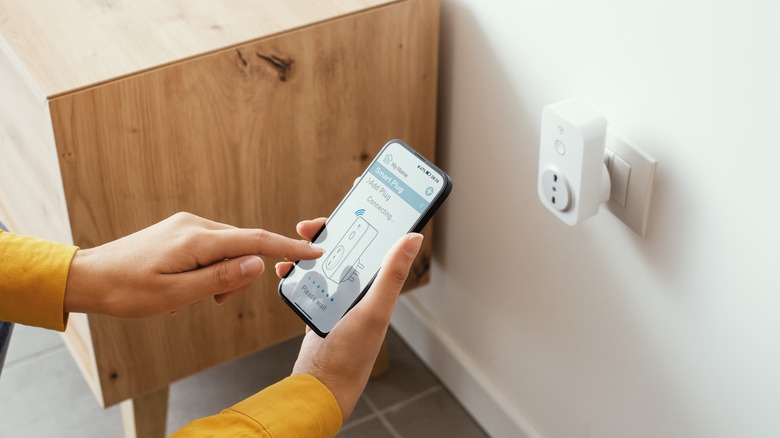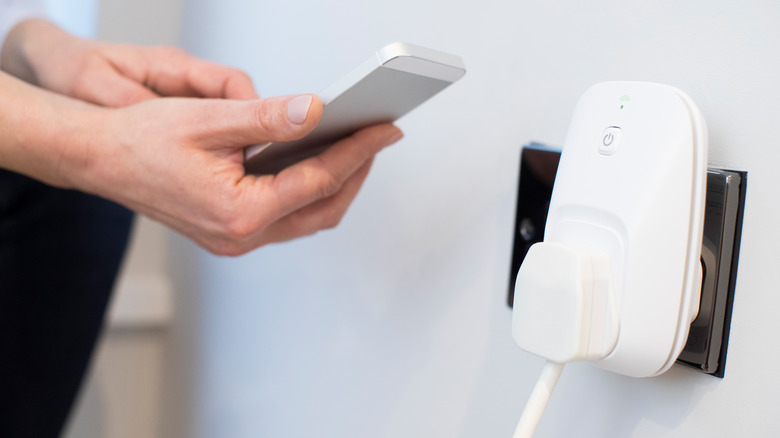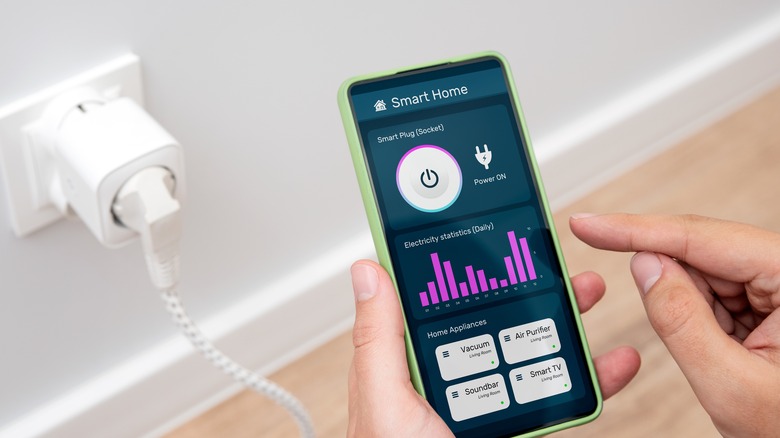How Do Smart Plugs Work And Do They Actually Save Energy?
We may receive a commission on purchases made from links.
If you're new to the world of home automation, smart plugs are a great way to dip your toes in for the first time. These devices allow you to turn any household appliance that requires electricity into a smart gadget. They are essentially Wi-Fi-enabled power adapters that allow you to operate your appliances remotely through a companion app on your smartphone. Smart plugs enable you to control the use of electricity in your home with the touch of a button and save a considerable amount of energy in the process.
Even if your coffee maker or bedside lamp is not switched on, they consume electricity simply by being plugged into the power outlet. This is called "standby power consumption," and it adds up over time, especially if you have many appliances plugged in at once. Smart plugs not only shut off your devices completely when they're not in use, but they also allow you to monitor the energy use of all your appliances, helping you stay informed and reduce your energy costs at home.
However, as with any technology that attempts to make our lives easier, smart plugs come with some limitations. Without taking these potential drawbacks into consideration, the product may end up doing more harm than good. Let's dive into everything you need to know about smart plugs so you can decide if they are the right fit for you.
How to install and use smart plugs in your home
Installing smart plugs in your home is a relatively easy process, even for newbies. Begin by plugging the device into the socket and switching it on. You'll be prompted to download the app to finish installing the smart plug and pairing it with your device. Follow the instructions to ensure the plug is connected to your home's Wi-Fi network, and decide which of your appliances you'd like to control. Plug it into your smart socket and set it up in the app. You will also have the option to sync the plug with your voice-controlled home assistant, such as Alexa or Google, making it easy to turn off and on your TV, dehumidifier, fan, air purifier, and more.
You can plug more than one appliance into your smart outlet, depending on the one you purchase. For example, the GHome Smart Power Strip has three sockets and three USB ports, allowing you to individually control up to six devices at once. If you purchase a set, ensure all are connected to Wi-Fi and added to the app. Once your power outlets have been installed, you can explore their features and capabilities. This could include creating schedules for your appliances to run at certain times of the day, enabling voice controls, monitoring energy use, and setting safety features that switch appliances off automatically. Be sure to do some research beforehand to ensure that your smart plugs are equipped with your preferred features.
The energy-saving benefits and potential disadvantages of smart plugs
If you're looking for ways to save on your electric bill, smart plugs are an investment worth making. Their primary job is to help you use your electrical devices more efficiently by running them only as needed. Plus, the app's monitoring feature allows you to see how much energy these appliances consume at various times of the day, so you can make more informed choices about your usage and save money on bills over time. Smart plugs themselves use around one to two watts of energy per day. By comparison, according to Anker Solix, TVs alone use approximately 0.3 to 5 watts in standby mode, meaning they consume energy even when turned off.
There are some hidden downsides of smart plugs that you should be mindful of. One of the main limitations is that the device only works when connected to Wi-Fi and controlled through the smartphone app. If your wireless network is down or your smartphone is incompatible with the app, the smart plug will not work. Further, you should know the capacity your smart plug is rated for. A power outlet overloaded with appliances, using more energy than it can handle, can cause it to overheat and even start a fire. However, if these don't apply to you and your goal is to create a more energy-efficient home, the power-saving benefits might outweigh the potential disadvantages.


